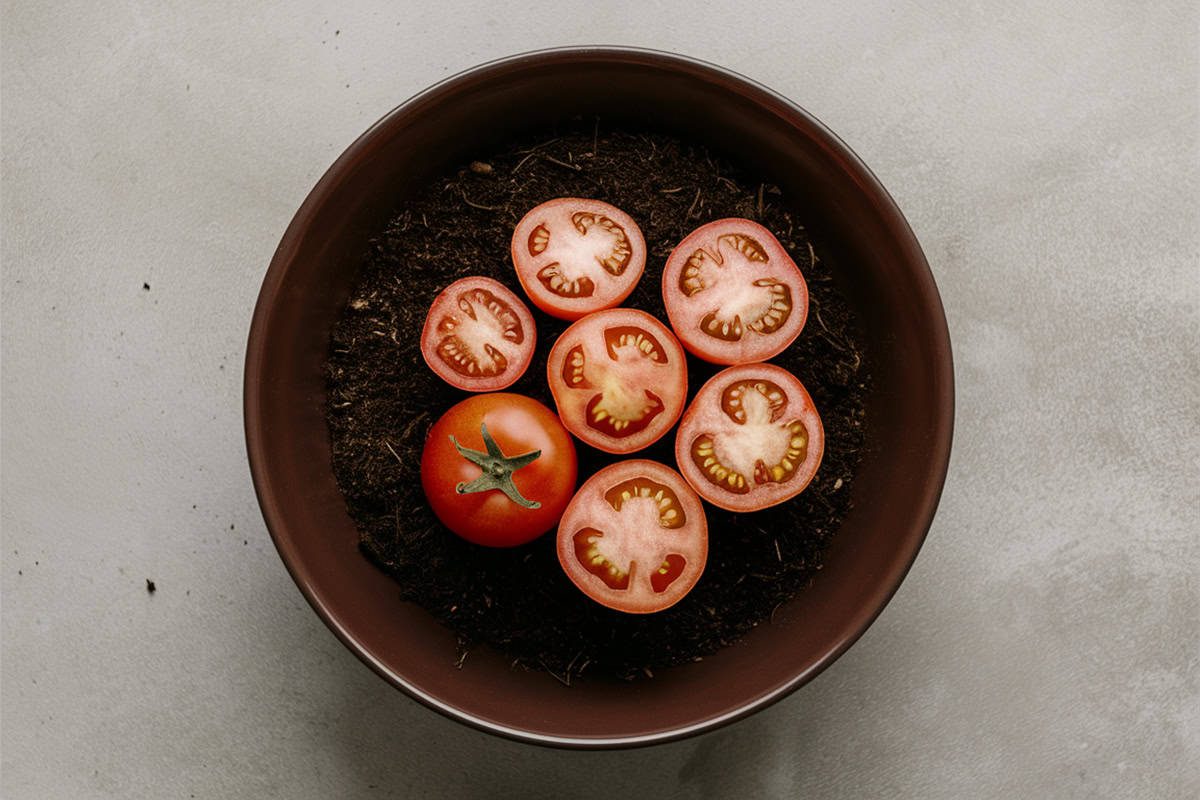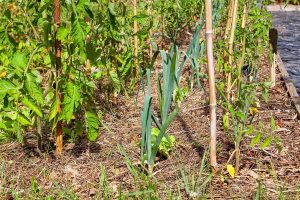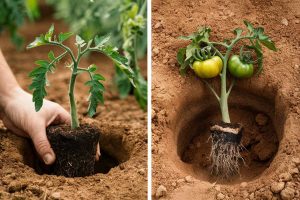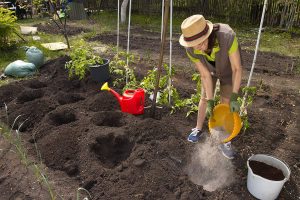You’re making a salad and have a few extra slices of tomato left on the cutting board. Instead of tossing them, you wonder if you could use them to grow your own tomatoes. Surprisingly, growing tomatoes from a slice is not just a gardening myth—it’s a practical method that can yield fruitful results. Learn how to turn those leftover slices into thriving tomato plants.
Table of Contents
Growing Tomatoes From a Slice – The Concept
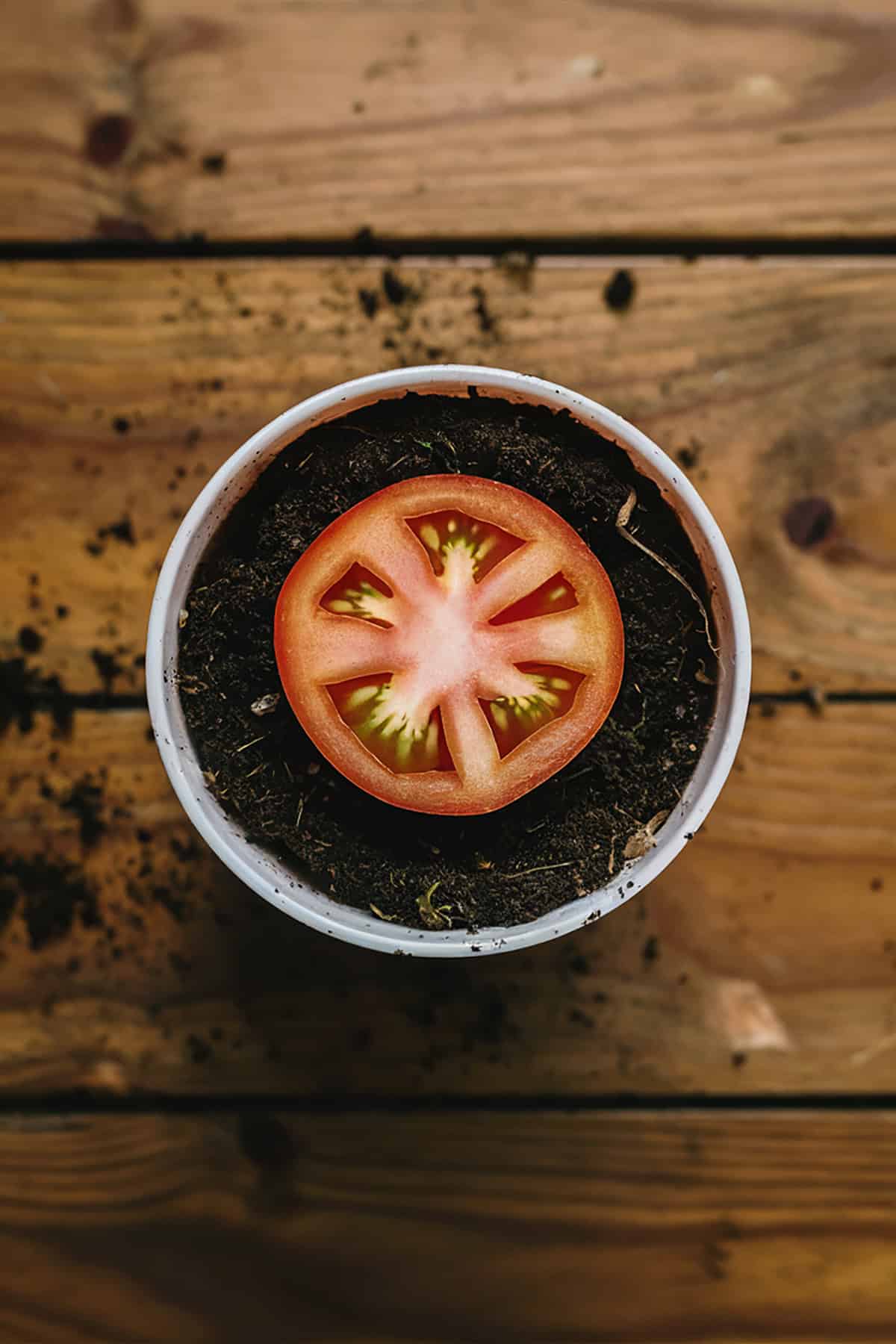
Growing tomatoes from a slice is both easy and practical. You can use slices from store-bought tomatoes or ones from your garden to start new plants quickly.
What Does It Mean?
Growing tomatoes from a slice involves using tomato slices to propagate new plants. You place slices on potting soil. Each slice contains seeds that will sprout and grow into new tomato plants. It’s a straightforward way to start tomatoes if you don’t have seeds or seedlings.
Scientific Basis Explained
Tomato seeds are encased in a gel-like substance within the tomato. When you slice the tomato, you expose these seeds. By placing the slices on the soil and watering them, you provide the necessary conditions for these seeds to germinate. Lightly covering the slices with soil helps anchor the seeds and provides some protection.
Step-By-Step Guide
Growing tomatoes from a tomato slice is an easy and enjoyable process. It involves selecting a suitable tomato, preparing the slices, planting them correctly, and caring for the emerging seedlings.
Choosing the Right Tomato
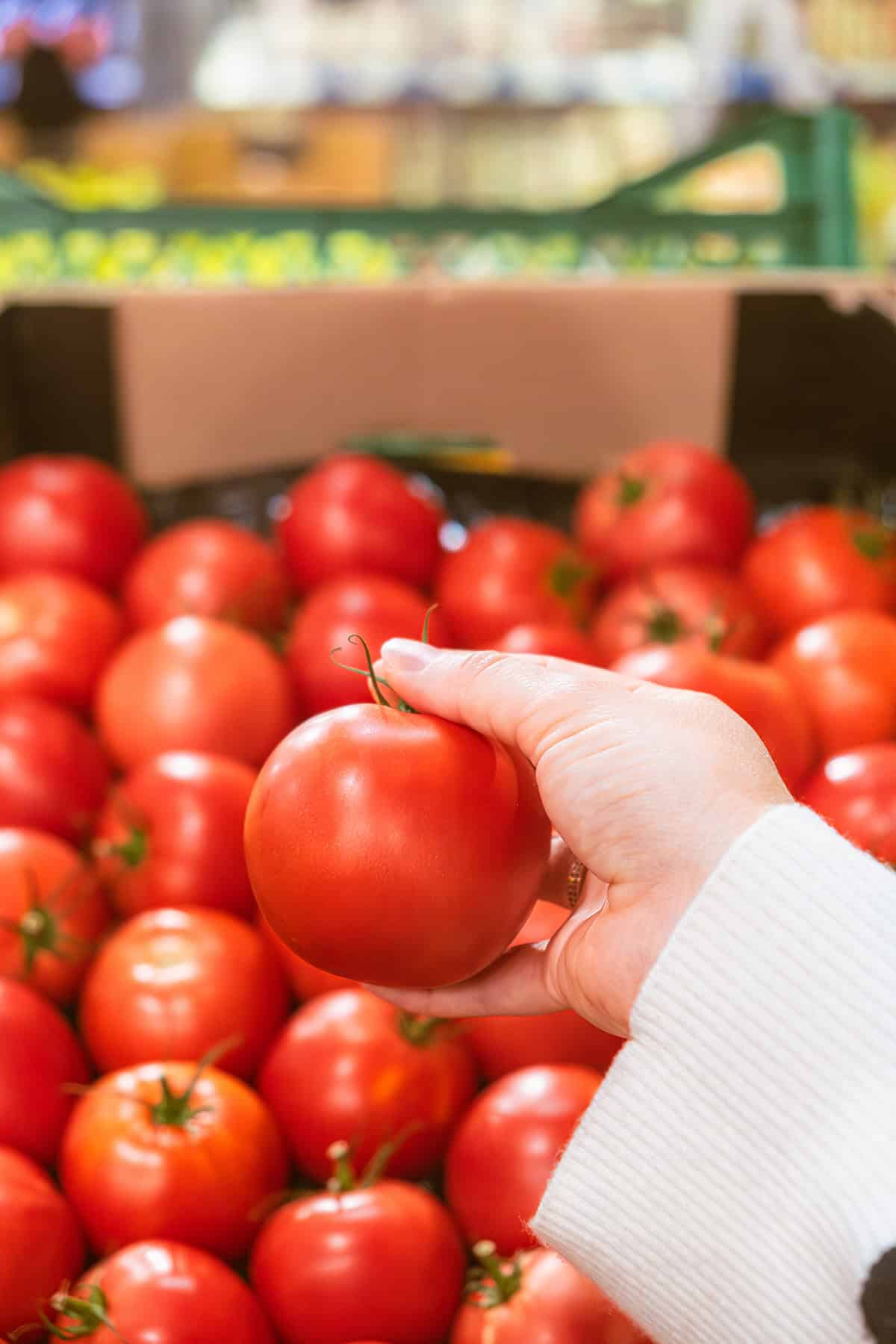
Select a ripe tomato. Ensure it is healthy and free from blemishes. Use heirloom or organic tomatoes for better results as they are more likely to germinate. Avoid using hybrid tomatoes as they may not produce true-to-type plants. Heirloom varieties are often more flavorful and productive.
Inspect the tomato to confirm its quality. Look for any signs of disease or rot. Healthier tomatoes will yield better results. Tomatoes from your garden or a local farmer’s market are ideal.
Preparing the Tomato Slice
Wash the tomato thoroughly. This removes any pesticides or bacteria. Slice the tomato into ¼-inch thick pieces. Uniform slices ensure even germination. You can use paper-thin slices, but thicker slices often work better. Avoid crushing the seeds in the process.
Lay the slices on a clean surface. Remove any excess juice. This helps prevent mold growth. Properly spaced slices will make planting easier and more effective.
Planting the Slice
Fill a pot or container with potting soil. Leave a few inches at the top. Place the tomato slices on the soil surface. Space them evenly, allowing for growth. Cover the slices with a thin layer of soil, about ¼ inch thick.
Then, water lightly. Ensure the soil is moist but not waterlogged. Maintain a warm environment around 70-80°F. This encourages faster germination. Place the container in a sunny location or under a grow light.
Caring for the Seedlings
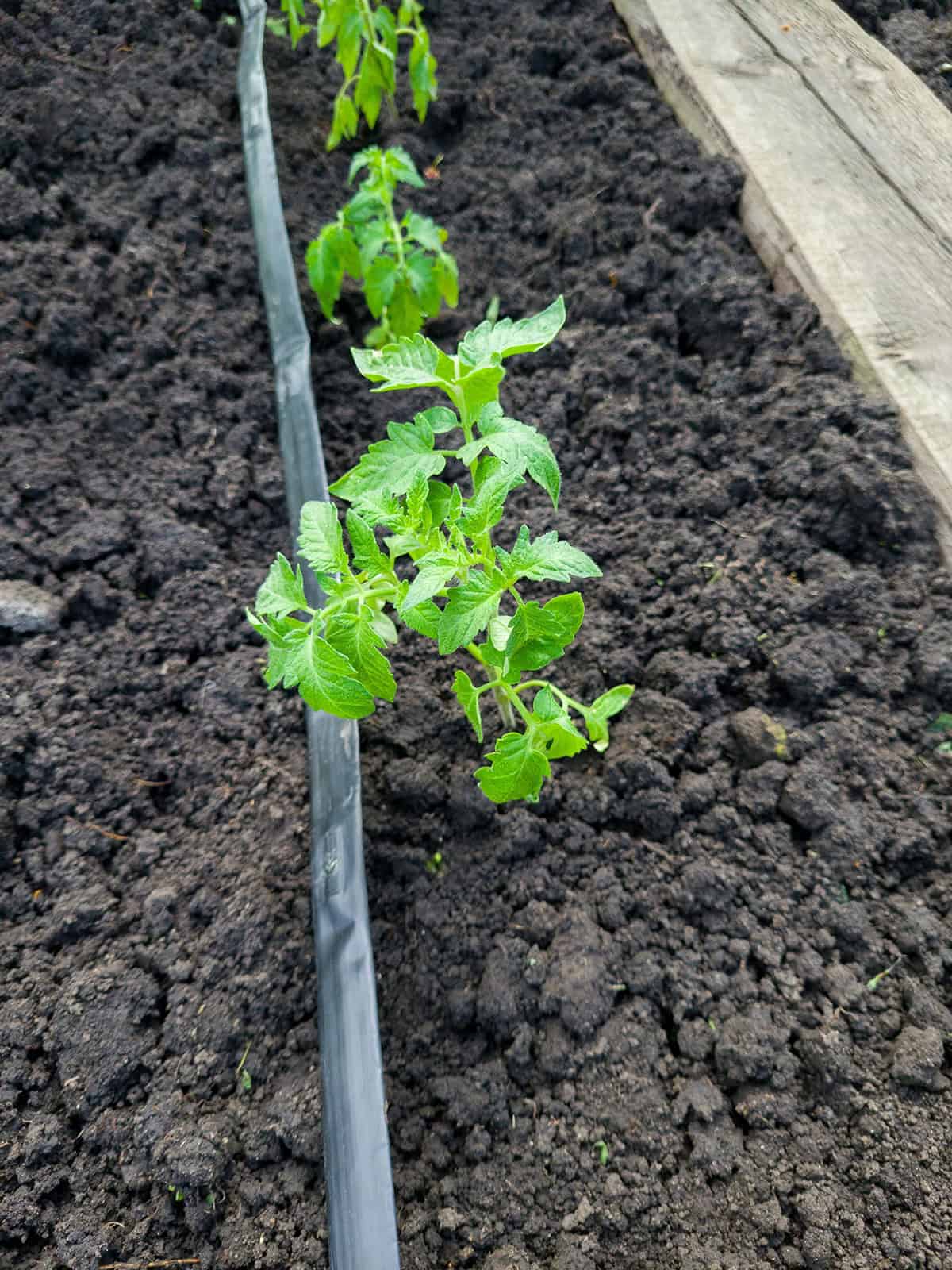
Check for sprouts in 1-2 weeks. Thin the seedlings to one plant per pot once they have two leaves. This gives each seedling enough space to grow. Ensure they receive 6-8 hours of light daily.
Water the seedlings regularly. Keep the soil moist but avoid soaking. Remove any weeds. This prevents competition for nutrients. Monitor for signs of pests and diseases. Healthy seedlings will result in robust tomato plants.
Regular care ensures the seedlings grow strong. Tie up vining stems to provide support if necessary. This helps keep the plants healthy and productive.
Advantages of Growing Tomatoes From a Slice
Growing tomatoes from a slice offers several benefits, such as cost savings, reduced waste, and ease of use, especially for beginners.
Cost-Effective
Growing tomatoes from a slice is a great way to save money. You don’t need to buy seeds, which can be expensive. You just use a slice from a tomato you already have. This method also reduces the need for additional gardening supplies.
All you need is potting soil and a container. These items are likely already on hand. This makes the process not only inexpensive but also accessible.
By using a slice of tomato instead of seeds, you can grow more plants without spending more money. This is especially useful for those who want to garden on a budget.
Utilizing Kitchen Scraps
Using tomato slices to grow plants helps reduce kitchen waste. Instead of throwing away overripe or unused tomatoes, you can turn them into new plants. This approach is environmentally friendly.
Transforming scraps into something useful can be empowering. It is a simple way to compost and recycle in your own home. Plus, it keeps food waste out of the landfill.
This method aligns well with sustainable living practices. It’s a practical step toward reducing your carbon footprint and making the most of your kitchen resources.
Easy for Beginners
Growing tomatoes from a slice is simple and straightforward. Even if you have no gardening experience, you can succeed. The process involves minimal steps.
Slice a tomato and place it in soil. You don’t need to worry about complex planting techniques. This removes the intimidation that many new gardeners feel.
Keeping the slices moist and warm will encourage them to sprout. This method provides a quick and rewarding way to get started with gardening. It builds confidence, encouraging you to grow more.
Potential Challenges
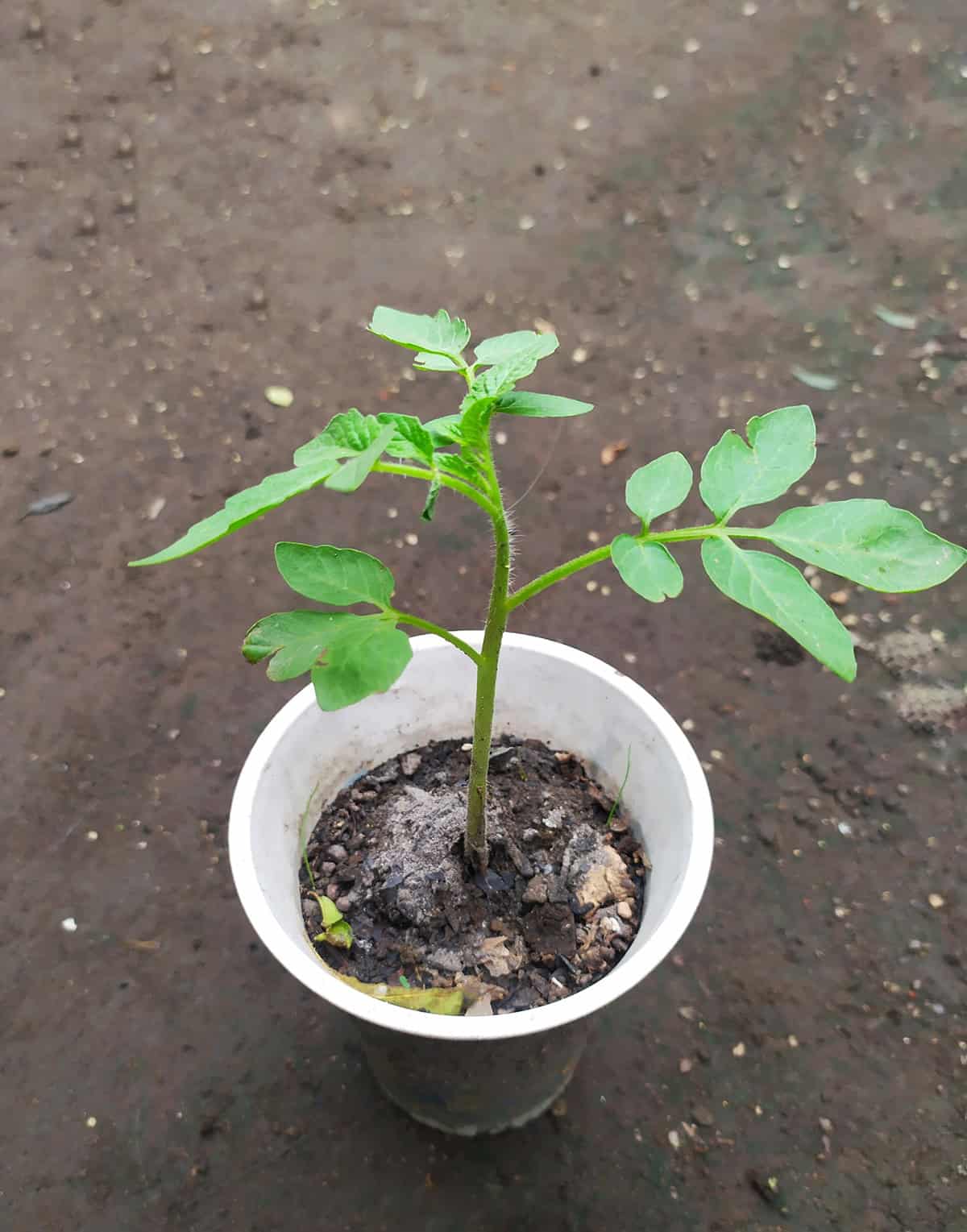
Growing tomatoes from a tomato slice can be both rewarding and challenging. You’ll need to navigate common issues, manage varied germination rates, and combat disease and pests effectively.
Common Issues and Solutions
When you grow tomatoes from a slice, uneven moisture levels can be problematic. Keep the soil consistently moist but not waterlogged. Using a spray bottle may help you maintain the correct moisture level.
Temperature fluctuations can also impede growth. Tomato plants thrive when temperatures remain stable. Try to keep the environment between 55 and 70 degrees Fahrenheit.
Another challenge is insufficient light. Tomatoes need at least 6-8 hours of sunlight daily. If natural light is lacking, consider using grow lights to supplement.
Germination Rates
Germination rates may vary significantly when growing tomatoes from slices. Factors like seed freshness, soil quality, and environmental conditions all play a role. Older seeds or suboptimal soil can reduce your success rates.
You may also experience variability based on the tomato variety. Some types, such as heirlooms, may have lower germination rates compared to hybrids. It is important to plant multiple slices to increase your chances of successful germination.
Once sprouted, ensure young seedlings get ample light and water to continue growing vigorously.
Disease and Pests
Tomato plants are susceptible to various diseases and pests. Fungal diseases, such as blight, can be a major issue. Ensure good air circulation around your plants to reduce humidity and fungal growth. Water the soil directly instead of the foliage to minimize the risk.
Pest infestations, such as aphids or spider mites, can harm your plants significantly. Regularly inspect your plants for signs of pests and take immediate action using insecticidal soap or other natural remedies.
In some cases, crop rotation and proper sanitation can help you prevent disease outbreaks. Remove any diseased plants immediately to prevent the spread of healthy ones.
Tips for Successful Growth
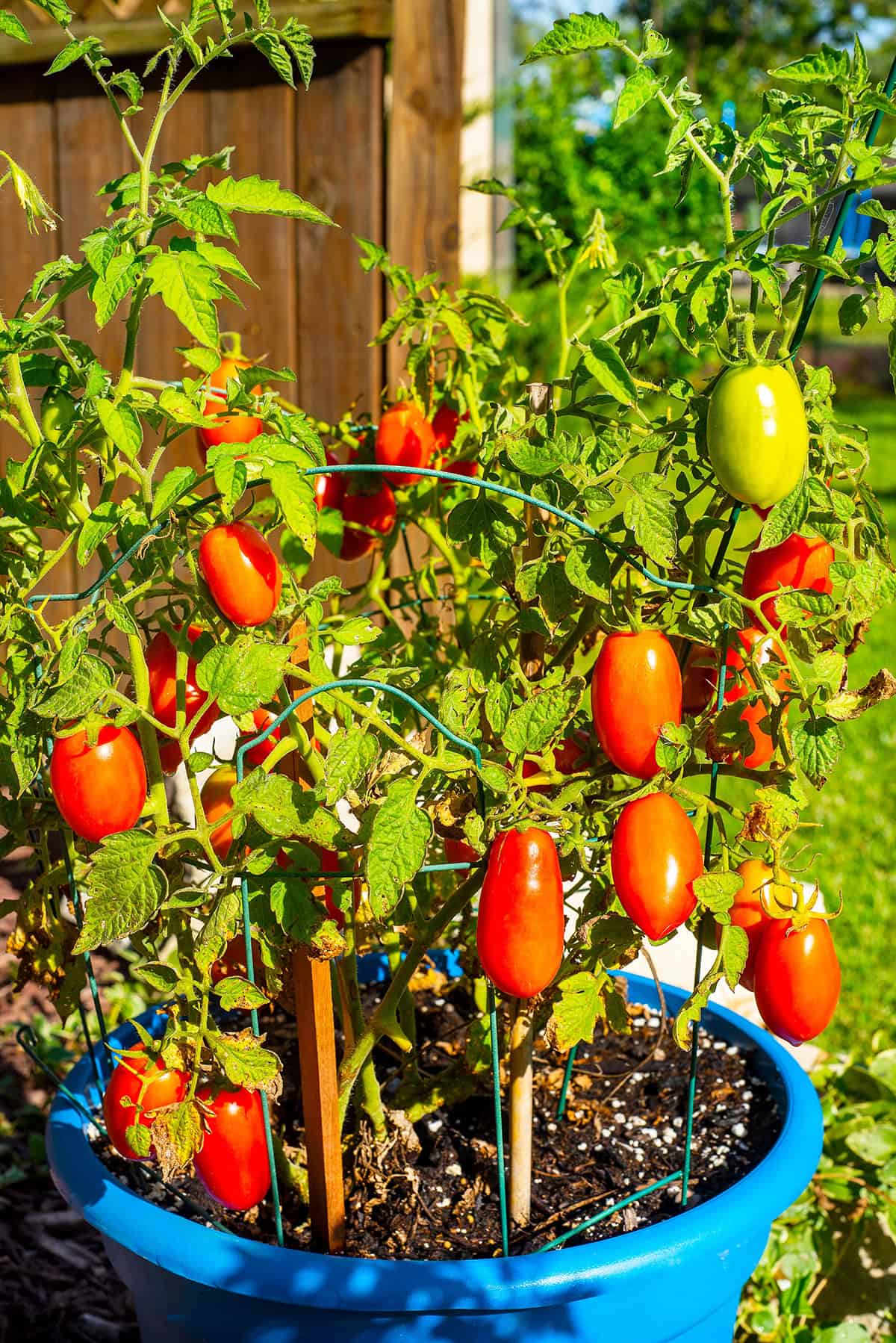
Growing tomatoes from a tomato slice can be fulfilling. Pay attention to soil quality, watering, light, and how to transplant seedlings.
Optimal Soil Conditions
Use well-draining soil rich in organic matter. Tomatoes thrive in slightly acidic soil with a pH between 6.0 and 6.8. Consider mixing compost or aged manure to improve nutrient content.
Avoid clay-heavy soil as it retains too much water, causing root rot. You can test your soil pH using home test kits available at garden stores. Adjust the pH if necessary with lime to raise it or sulfur to lower it.
Healthy soil promotes strong root development, essential for successful growth.
Watering and Light Requirements
Tomatoes need consistent moisture but avoid waterlogging. Water them deeply once or twice a week. Ensure the soil remains moist but not soggy. Mulching helps retain moisture and reduce water evaporation.
Place your plants where they get at least 6-8 hours of sunlight daily. Insufficient light leads to weak growth and poor fruit production.
Use a soaker hose or drip irrigation to water at the base, preventing fungal diseases. During hot periods, monitor soil moisture levels closely to avoid dehydration.
Transplanting the Seedlings
Once seedlings grow 3-4 inches tall with true leaves, transplant them into larger pots or directly into the garden.
Gently loosen the soil around the seedlings to avoid damaging the roots. Dig a hole deep enough to accommodate the root ball and plant them slightly deeper than they were in their pots. This promotes stronger stem growth.
Space tomato plants 18-24 inches apart to allow adequate air circulation and sunlight to reach all parts of the plant. Water thoroughly after transplanting to help the seedlings settle into their new environment.
Using stakes or cages while transplanting supports the plants as they grow taller.
Comparing Methods: Slices Vs. Seeds
Growing tomatoes from a slice or from seeds offers unique advantages. Understanding these methods helps you choose based on your resources and gardening goals.
Pros and Cons of Each Method
Tomato Slices:
Using tomato slices offers simplicity. You just slice a tomato and plant it. This method is cost-effective if you have ripe tomatoes at hand.
Slices sprout quickly, providing evident progress in a short time. However, tomato slices can lead to mold if not properly cared for.
There’s also a risk that the quality of the new plants might not match the parent tomato. This method may not be best for gardeners seeking specific tomato varieties.
Tomato Seeds:
Growing from seeds provides control over the variety and quality. Seeds are easier to store and handle. They also reduce the risk of disease compared to planting slices.
This method suits those seeking specific types, offering a range of choices from heirloom to modern varieties. But this method takes more time.
You’ll need to start seeds indoors weeks before transplanting. It requires more patience and planning. Additionally, starting seeds indoors demands more supplies like seed trays and grow lights.
Which Is Better for You?
Your choice between tomato slices and seeds depends on your gardening goals, time, and resources.
If you want quick results with minimal investment, planting tomato slices is suitable. This method also works well if you’re experimenting or if you have leftover tomatoes. It’s simple and straightforward, making it ideal for beginners or those short on time.
Experienced gardeners aiming for specific varieties will find seeds better. They offer more control over the plants’ genetics and health. Seeds also ensure you get the desired tomato type, a crucial aspect for competitive gardening or culinary purposes.
Consider your space, time, and goals. For a quick, easy start, tomato slices are ideal. For control and variety, choose seeds. Evaluate what matters most in your gardening journey to decide.
